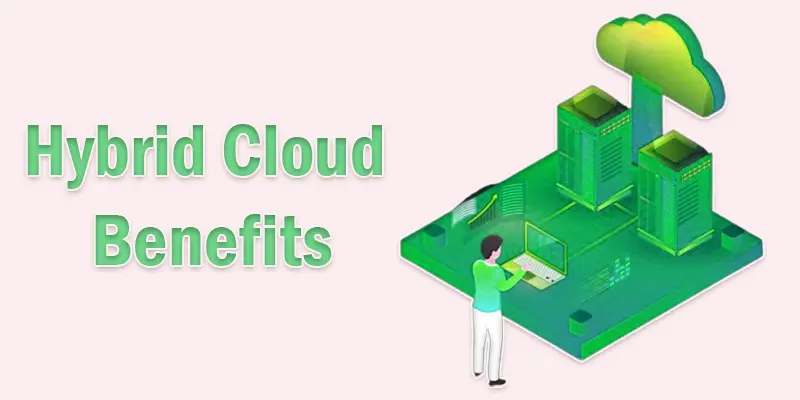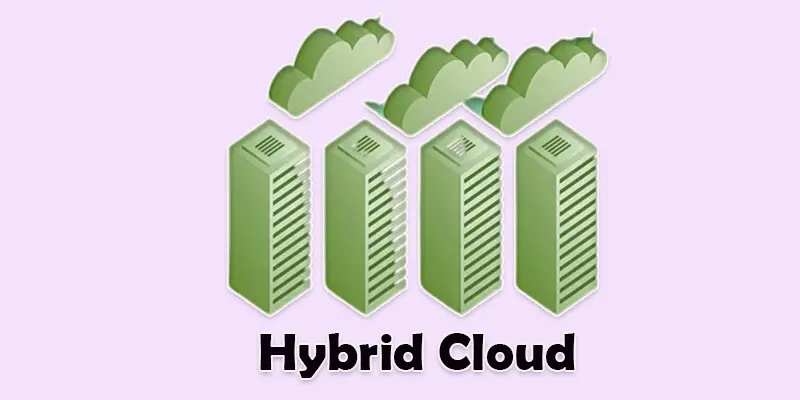Understanding the Benefits and Drawbacks of Hybrid Cloud Computing
Published: 1 Jun 2025
Advantages and Disadvantages of Hybrid Cloud for Small Businesses
With more than 80% of companies currently utilizing hybrid cloud computing to combine private and public cloud systems, it is rapidly expanding. But is it really the best of both worlds, or just another IT headache? Many users feel stuck needing better security but also wanting to save costs and stay flexible. Regardless of your level of familiarity with cloud computing, let’s examine the true pros and cons of hybrid cloud solutions
| Hybrid Cloud Architecture Benefits |
|---|
|
Hybrid cloud gives you the best mix of private and public cloud, helping you work faster, save money, and keep your data safe.
|
Flexibility
Flexibility means you can run some tasks in a private cloud and others in a public cloud. This helps you choose what works best for your needs.
Cost Efficiency
Cost efficiency means you only pay for the extra cloud space when you need it. This helps you save money instead of buying more hardware.
Better Security
Better security means you can keep sensitive data in your private cloud. This gives you more control and keeps your important information safe.
High Performance
High performance means your apps and data run faster because the workload is shared between private and public clouds. This helps reduce delays and keeps things running smoothly.
Easy Scalability
Easy scalability means you can quickly add more storage or power when your needs grow. You don’t have to buy new hardware to keep up.
Business Continuity
Business continuity means your work keeps going even if one part of the system fails. The hybrid cloud gives you backup and support to avoid downtime.
Improved Data Control
Improved data control means you decide where to store your data and who can access it. This helps keep your information organized and safe.
Faster Deployment
Faster deployment means you can launch apps or services quickly using cloud tools. This saves time and helps you work faster.
Customization
Customization means you can adjust the cloud setup to fit your business needs. This gives you more control over how everything works.
Smooth Cloud Transition
Smooth cloud transition means you can move your data and apps to the cloud gradually, without disrupting your business. This makes switching easier and less stressful.

| Hybrid Cloud Disadvantages |
|---|
|
While the hybrid cloud offers many benefits, it also comes with some disadvantages, like higher complexity and potential security challenges.
|
High Complexity
High complexity means managing both private and public clouds can be tricky. It requires careful planning and more resources to make sure everything works well together.
Security Risks
Security risks mean that using both private and public clouds can increase the chances of data breaches or unauthorized access. It’s harder to keep everything safe when it’s spread across different systems.
Increased Costs
Increased costs mean you might end up paying more for using both private and public clouds. You need to manage both systems, which can lead to higher maintenance and service fees.
Integration Challenges
Integration challenges mean it can be difficult to make different cloud systems work together smoothly. This may require extra effort to ensure everything connects properly.
Management Overhead
Management overhead means you need more time and effort to monitor and control both private and public clouds. This can add extra work for your team to keep everything running smoothly.
Limited Control
Limited control means you might have less control over certain parts of the public cloud. This can make it harder to customize or manage those services the way you want.
Vendor Lock-In
Vendor lock-in means you may become too dependent on one cloud provider, making it hard to switch to another without facing extra costs or challenges.
Compliance Issues
Compliance issues mean it can be harder to meet legal or industry rules when your data is stored in both private and public clouds. Keeping everything in line with regulations requires extra effort.
Data Transfer Delays
Data transfer delays happen when moving data between private and public clouds takes longer than expected. This can slow down your work and affect your performance.
Dependence on Internet Connectivity
Dependence on internet connectivity means if your internet goes down, you may lose access to cloud services. This can cause disruptions in your work until the connection is restored.

Conclusion About Hybrid Cloud Computing Pros and Cons for Enterprises
A balanced picture of hybrid cloud computing’s potential is given by its benefits and drawbacks. From cost savings and flexibility to security concerns and complexity, understanding these factors is key. Personally, I recommend that businesses carefully evaluate their specific needs before transitioning to a hybrid cloud solution. If you’re considering it for your organization, make sure to consult with an expert to tailor the solution that best fits your goals.
FAQS
Cloud infrastructure provides flexibility, scalability, and cost savings. It allows businesses to access resources when needed without worrying about hardware.
On-premises systems and cloud services can be combined with AWS Hybrid Cloud. Better control, flexibility, and seamless interaction between the two are guaranteed.
Cloud infrastructure offers quick deployment, reducing the time to launch new services and applications, which leads to faster business growth.
By removing the need for pricey hardware and lowering maintenance expenses, the cloud contributes to cost savings. Pay-as-you-go pricing is another feature it provides for improved budgetary control.
With a hybrid cloud, companies can benefit from the flexibility and scalability of the cloud while maintaining sensitive data on-site.

- Be Respectful
- Stay Relevant
- Stay Positive
- True Feedback
- Encourage Discussion
- Avoid Spamming
- No Fake News
- Don't Copy-Paste
- No Personal Attacks



- Be Respectful
- Stay Relevant
- Stay Positive
- True Feedback
- Encourage Discussion
- Avoid Spamming
- No Fake News
- Don't Copy-Paste
- No Personal Attacks





